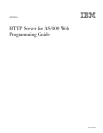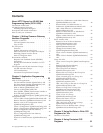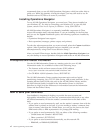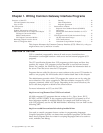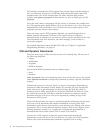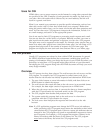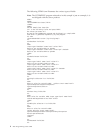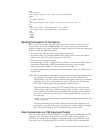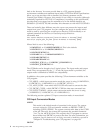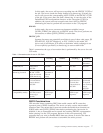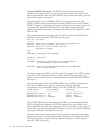
Chapter 1. Writing Common Gateway Interface Programs
OverviewoftheCGI ...........1
CGI and Dynamic Documents .......2
UsesforCGI.............3
The CGI process .............3
Overview..............3
SendingInformationtotheServer......5
Data Conversions on CGI Input and Output. . . 5
CGI Input Conversion Modes.......6
DBCS Considerations .........7
CGI Output Conversion Modes ......9
ReturningOutputfromtheServer......11
HowCGIProgramsWork........12
Parsing ..............12
Datamanipulation..........12
Response generation .........12
Environment variables...........13
Requests from Standard Search (ISINDEX)
Documents.............15
Passing SSL Environment Variables to a CGI
Program..............15
CGI Programs and AS/400 Activation Groups . . . 17
AS/400 Activation Groups ........17
CGIConsiderations...........18
Activation Group Problem Examples .....18
This chapter discusses the Common Gateway Interface (CGI): What it is, why you
might want to use it, and how it works.
Overview of the CGI
CGI is a standard, supported by almost all web servers, that defines how
information is exchanged between a web server and an external program (CGI
program).
The CGI specification dictates how CGI programs get their input and how they
produce any output. CGI programs process data that is received from browser
clients. For example, the client fills out a form and sends the information back to
the server. Then the server runs the CGI program.
Programs that are called by the server must conform to the server CGI interface in
order to run properly. We will describe this in further detail later in this chapter.
The administrator controls which CGI programs the system can run by using the
server directives. The server recognizes a URL that contains a request for a CGI
program, commonly called a CGI script. Depending on the server directives, the
server calls that program on behalf of the client browser.
For more information on CGI, see this URL:
http://www.w3.org/Daemon/User/CGI/Overview.html.
AS/400
®
supports CGI programs that are written in C++, Rexx, Java
®
, ILE-C,
ILE-RPG, and ILE-COBOL. It also supports multi-thread CGI programs in all of
these languages capable of multiple threads. For sample code that can help you
with CGI programs, see the AS/400 Web Builder’s Workshop. You can find it at the
following URL:
http://www.as400.ibm.com/tstudio/workshop/webbuild.htm.
You need to compile programs that are written in programming languages.
Compiled programs typically run faster than uncompiled programs. On the other
hand, those programs that are written in scripting languages tend to be easier to
write, maintain, and debug.
© Copyright IBM Corp. 1997, 2000 1



